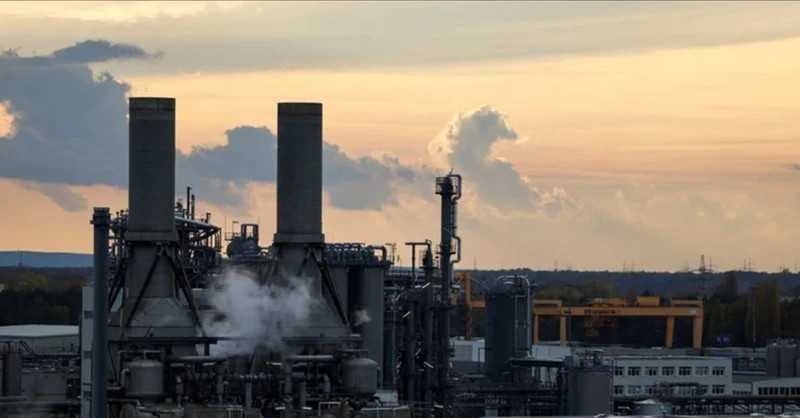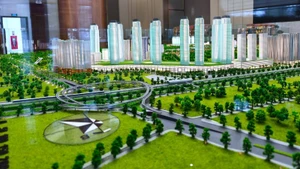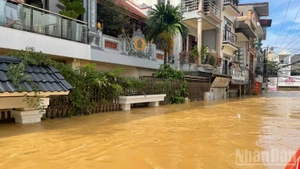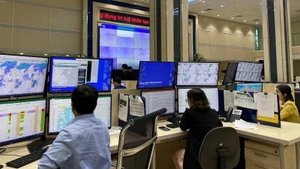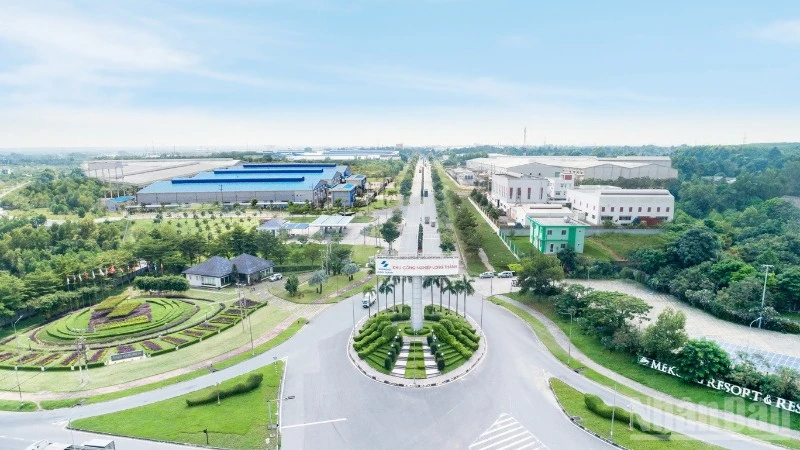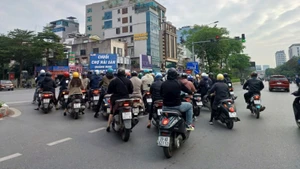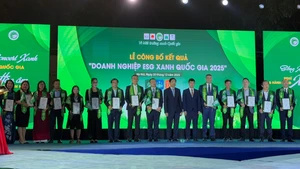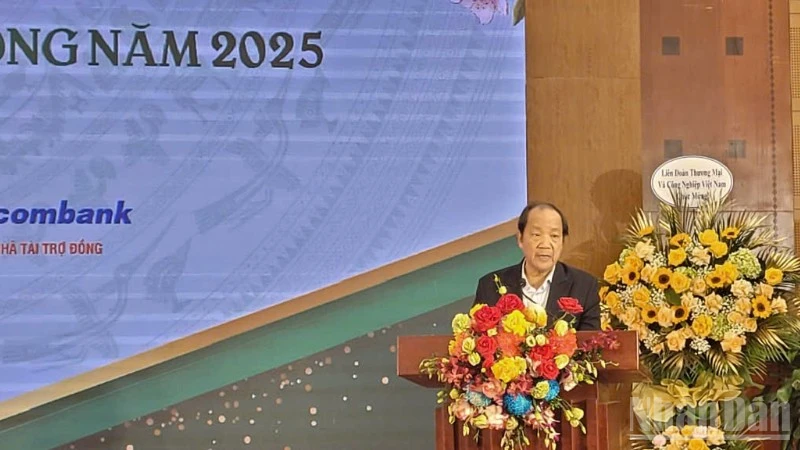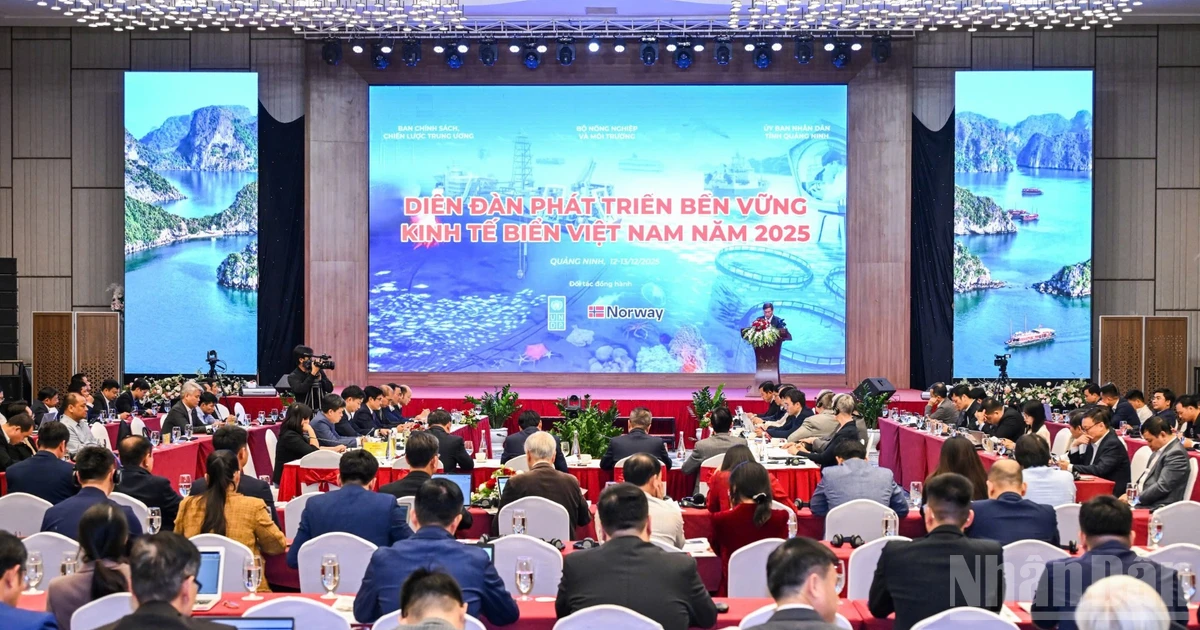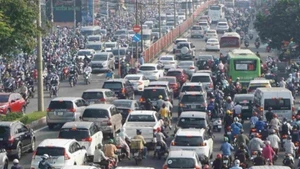In order to create mechanisms and policies for organisations and individuals to participate in developing the carbon market, the production, import, export, consumption and disposal of substances that deplete the ozone layer, according to the international convention to which Vietnam has committed, dated January 7, 2022, the Government issued Decree No. 06/2022/ND-CP on greenhouse gas (GHG) reduction, ozone layer protection and carbon market.
According to the development roadmap, the period until the end of 2027 will develop regulations on carbon credit management, activities of exchanging greenhouse gas emission quotas and carbon credits. From 2028, the official carbon credit exchange will be operated to regulate activities connecting and exchanging domestic carbon credits with regional and world markets.
To gradually realise this strategy, on October 22, 2020, the Emission Reduction Payment Agreement (ERPA) in the North Central Region of Vietnam was signed between Vietnam and the World Bank for six North Central provinces from 2018 to 2024. According to the ERPA, Vietnam transferred 10.3 million tonnes of carbon to the World Bank with a total value of 51.5 million USD, equivalent to 1,200 billion VND.
From the first success in transferring forest carbon credits, with great commercial potential, the established carbon credit market will help supplement financial resources for forest management, protection and development, improving the quality of the forest ecosystem. Thereby helping to reduce pressure on the state budget to invest in the forestry industry.
The 2017 Law on Forestry stipulates that forest carbon absorption and storage services are one of five types of forest environmental services. On November 16, 2018, the Government issued Decree No. 156/2018/ND-CP, detailing several articles of the 2017 Law on Forestry, which mentioned types of forest environmental services. However, there are no specific regulations on forest carbon absorption and storage services.
Furthermore, another important issue is that after Decree No. 156/2018/ND-CP took effect, the general legal system has had many changes, including legal documents related to the forestry sector.
The Law on Environmental Protection 2020 stipulates that forest environmental services, including forest carbon absorption and storage services, are one of the types of natural ecosystem services that are paid for services according to the provisions of forestry law.
The law also regulates the organisation and development of the carbon market, in which the domestic carbon market includes activities to exchange greenhouse gas emission quotas and carbon credits obtained from domestic and international carbon credit exchange and offset mechanisms, following the provisions of law and international treaties that Vietnam joined as a member.
Decree No. 06/2022/ND-CP dated January 7, 2022, of the Government regulates the mitigation of greenhouse gas emissions and the protection of the ozone layer, the implementation of sustainable forest management measures, the protection and improvement of forest coverage and quality, to increase the ability to absorb greenhouse gases and participate in domestic and international carbon credit exchange and offset mechanisms.
Vietnam has also signed the Paris Agreement on climate change, in which Vietnam can exchange and transfer emissions reduction results to other countries.
Therefore, the early promulgation of a Decree amending and supplementing several articles of Decree 156/2018/ND-CP is very necessary to promptly create opportunities to participate in the carbon credit market for agencies, organisations and individuals, contributing to strengthening forest governance capacity and realise the goal of sustainable Vietnam forestry development.
In particular, forest owners who are directly protecting the forests will have more sources of income, contributing to improving their lives and creating more motivation for them to keep the forests and protect them better.
Besides, developing forest carbon credit trade is also a good opportunity to have more resources to successfully implement the Vietnam Forestry Development Strategy for the 2021-2030 period, with a vision to 2050, National strategy on climate change, National strategy on green growth associated with sustainable development, and the goal of reducing greenhouse gas emissions, according to Vietnam's commitment to net-zero emissions by 2050 at COP26.
